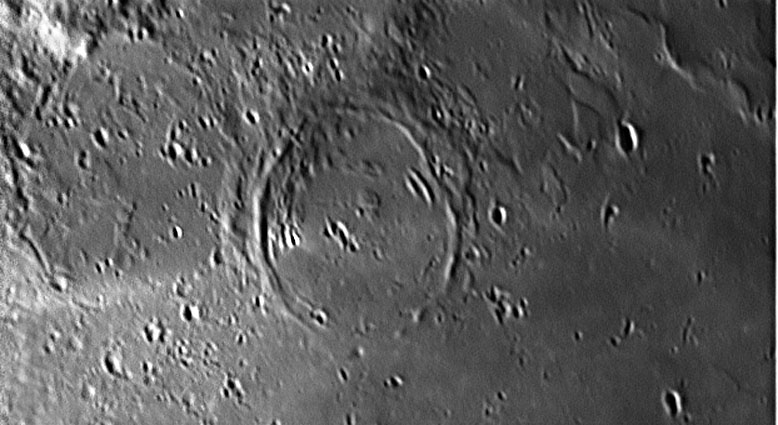Imaging the First Lunar Photographer

Explanation:
In 1839. Louis Daguerre took the first photograph of the Moon. It
was a lousy shot, showing no features, but inaugurating imaging studies that have
culminated (so far) with exquisite images such as this one of Daguerre's namesake
crater. (Perhaps if his photo were better he would have gotten a better crater.)
Daguerre (diameter 46 km) is a mirror of Fracastoris
on the opposite side of Mare Nectaris. Both were formed
on the floor of the impact basin and were flooded when later mare lavas engulfed
them. Some volcanists, who searched for evidence that lunar craters were volcanoes
rather than the result of impact, believed that Daguerre's rim was double in some
places - clearly a sign of eruption along parallel curving faults. Also, the darkness
visible here along the northern portion of the rim is from pyroclastic (volcanic
ash) deposits. So the volcanists' interpretation was that the double rim and the
pyroclastics meant that the entire crater had to be volcanic. Wes' high resolution
image dispels the notion of a double rim. The extra rim on the left side is actually
the rim of a Daguerre-like crater immediately to the west. And the few ridges inside
the main rim are probably just normal terraces of an impact crater inner wall. But
the pyroclastics are evidence of a real volcanic eruption, probably from small vents
at the NNE portion of Daguerre's rim. But volcanic eruptions on the rim of a crater
do not mean the crater is volcanic! Three more things of note here. First, the area
to the right of Daguerre may be another old, lava-covered crater, but its southern
side has peculiar triangular and lozenge-shaped surfaces divided by a though. This
seems more like Mars topography than lunar. Second, the area is peppered with small
pits that are secondary craters from Theophilus.
Third, a peculiar ray, apparently from Madler, crosses the western rim of Deguerre.
This has been a busy neighborhood!
—
Chuck
Wood
Technical Details:
Sept 3, 2004. Starmaster 14.5 + DMK-21F04 camera at 30FPS; stack of 864 frames from
3000.
Related Links:
Lunar Orbiter IV View
Rukl Atlas of the Moon, Sheet 47
